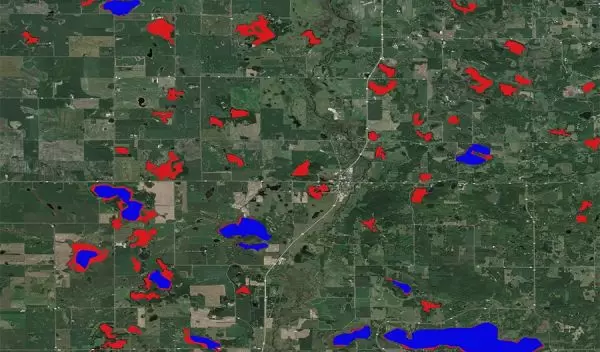
Scientists use new technique to identify changes in lakes and reservoirs around the world
A team of researchers led by University of Minnesota, Twin Cities data scientists and supported by the U.S. National Science Foundation has published a first-of-its-kind global dataset of lakes and reservoirs. It shows how these waterbodies have changed over the last three decades or more.
The data will provide environmental researchers with new information about land and fresh water use as well as how lakes and reservoirs are affected by humans and climate change. The research is also a major advancement in machine-learning techniques.
A paper highlighting the new dataset, called Reservoir and Lake Surface Area Timeseries (ReaLSAT) was published in Scientific Data. "This important work provides a data baseline and new analytics to measure the impacts of climate change," says Sylvia Spengler, a program director in NSF's Division of Information and Intelligent Systems.
Highlights of the study include:
- The ReaLSAT dataset contains the location and surface area variations of 681,137 lakes and reservoirs larger than 0.1 square kilometers. The previous most comprehensive database, called HydroLAKES, had identified 245,420 lakes and reservoirs for part of the world.
- RealSAT provides data on the surface area of each body of water for each month from 1984 to 2015. That makes it possible to quantify changes in lake and reservoir area over time, key to understanding how changing climate and land use are altering bodies of fresh water.
- The RealSAT dataset is a major milestone in the application of new knowledge-guided machine learning for use in the environmental sciences, the researchers say. This dataset can be extended nearly automatically via machine learning and can be quickly replicated for earth observation data becoming available at better resolutions.
"Around the world, we are seeing lakes and reservoirs changing rapidly with seasonal precipitation patterns, long-term changes in climate, and human management decisions," said Vipin Kumar, the senior author of the study. "This new dataset greatly improves the ability of scientists to understand the impact of changing climate and human actions on fresh water across the globe."


